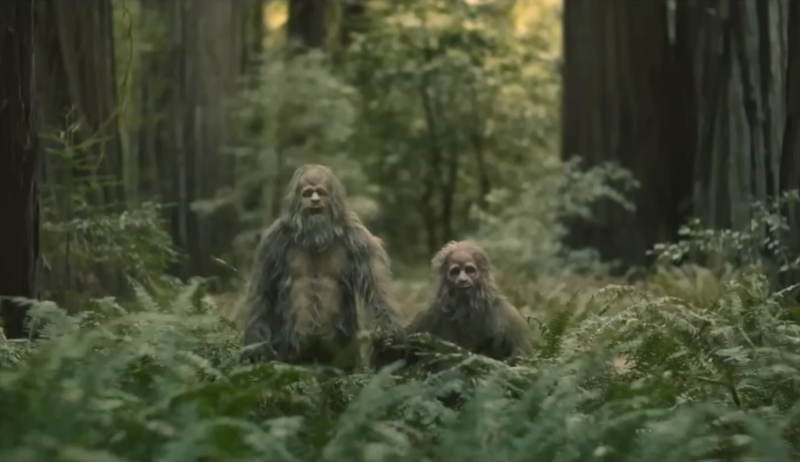Sasquatch Sunset was always going to be a wild card of a movie. That much should be obvious before you even sit down to watch this dialogue-free, narrator-less, 90-minute musing on the lives of a Bigfoot family. But the finished product is even stranger than you might imagine.
‘Sasquatch Sunset’ Is an Eco Message Buried Beneath Poop-Flinging Anarchy

At the outset, this Ari Aster production had a choice to make. Sasquatch Sunset could have leaned into its inherent appeal for the thousands of people who believe Bigfoot is real, and offered ideas about how these mythical creatures actually live(d). It could have been one of those beautifully shot art experiments that forces viewers to ponder the beauty and brutality of nature, and humanity’s place in it. Or it could have simply been a comedy about a bunch of hairy bipeds who walk like humans but are constrained by none of humanity’s social constructs.
Instead of picking one path, Sasquatch Sunset opts for all three. The remarkable thing is that it results in a consistently entertaining movie, despite its wildly uneven tone.
Sasquatch Sunset‘s watchability is the product of a very specific alchemy. It starts with the pairing of a dreamy soundtrack by The Octopus Project with masterful cinematography that captures the American wilderness in all of its awe-inspiring glory. Sasquatch Sunset is also elevated by its cast — Nathan Zellner as dad, Riley Keough as mom, and Jesse Eisenberg and Christophe Zajac-Denek as the sons. Each injects their often absurd roles with a surprising sense of pathos. (Keough, in particular, conveys an incredible range of emotions using only her eyes.)
All of this helps to propel pertinent messages about ecology and extinction. Don’t let that fool you into thinking this is a sensible film, however. There is nothing subtle or cerebral about the comedic content here. Specifically, there are moments of poop-flinging, mushroom-vomiting, placenta throwing and skunk-sniffing. More than one sasquatch penis makes an appearance. At one point, there’s a birthing scene in which a lady sasquatch gets on all fours while her son stands behind her in a goalie position. It’s not all perfect, but there are laugh-out-loud moments here. The response of the sasquatch family to the discovery of a freshly built road in their territory, in particular, is both disquieting and hilarious.
One ultimately gets the sense that everyone involved in Sasquatch Sunset wanted to make important points about the ways human beings destroy the natural world. But they also wanted to lay some blame with the hapless sasquatch as well. This is a Bigfoot family with poor impulse control who, try as they might, can’t even figure out how to count to four yet. This is a species which already can’t find any more of its kind before humans even start showing up. Maybe, the film suggests, sasquatches are already on the verge of extinction because they’re not the sharpest tools in the shed. Humanity? Well, we’re just not helping matters.
‘Sasquatch Sunset’ is released nationwide on April 12, 2024. Screenings at San Francisco’s AMC Metreon and Alamo Drafthouse begin on April 11.

